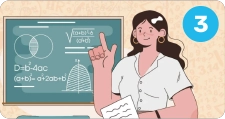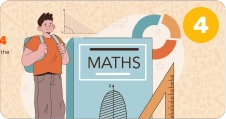When you square a number, you multiply it by itself. It’s a basic mathematical operation, but one that has wide-ranging applications—from geometry and algebra to computing and physics.
In this blog, we’ll explore the squares of the numbers from 1 to 50. This can be particularly helpful for students, teachers, or anyone brushing up on their math skills.
1. What Does “Square of a Number” Mean?
The square of a number is the result of multiplying that number by itself. It’s written mathematically as:
Square of n=n×n=n2
For example, the square of 2 is 22 = 2 × 2 = 4.
A square is a shape with all four sides of equal length. The area of a square is calculated by multiplying one side by itself. In other words:
Area of a Square= Side× Side= Side
2. Why Learn Squares?
| Number | Square | Number | Square | Number | Square | Number | Square | Number | Square |
|---|---|---|---|---|---|---|---|---|---|
| 12 | 1×1 = 1 | 112 | 11×11 = 121 | 212 | 21×21 = 441 | 312 | 31×31 = 961 | 412 | 41×41 = 1681 |
| 22 | 2×2 = 4 | 122 | 12×12 = 144 | 222 | 22×22 = 484 | 322 | 32×32 = 1024 | 422 | 42×42 = 1764 |
| 32 | 3×3 = 9 | 132 | 13×13 = 169 | 232 | 23×23 = 529 | 332 | 33×33 = 1089 | 432 | 43×43 = 1849 |
| 42 | 4×4 = 16 | 142 | 14×14 = 196 | 242 | 24×24 = 576 | 342 | 34×34 = 1156 | 442 | 44×44 = 1936 |
| 52 | 5×5 = 25 | 152 | 15×15 = 225 | 252 | 25×25 = 625 | 352 | 35×35 = 1225 | 452 | 45×45 = 2025 |
| 62 | 6×6 = 36 | 162 | 16×16 = 256 | 262 | 26×26 = 676 | 362 | 36×36 = 1296 | 462 | 46×46 = 2116 |
| 72 | 7×7 = 49 | 172 | 17×17 = 289 | 272 | 27×27 = 729 | 372 | 37×37 = 1369 | 472 | 47×47 = 2209 |
| 82 | 8×8 = 64 | 182 | 18×18 = 324 | 282 | 28×28 = 784 | 382 | 38×38 = 1444 | 482 | 48×48 = 2304 |
| 92 | 9×9 = 81 | 192 | 19×19 = 361 | 292 | 29×29 = 841 | 392 | 39×39 = 1521 | 492 | 49×49 = 2401 |
| 102 | 10×10 = 100 | 202 | 20×20 = 400 | 302 | 30×30 = 900 | 402 | 40×40 = 1600 | 502 | 50×50 = 2500 |
Learning squares is more than just a memory exercise:
- Quick Calculations: Knowing square values can speed up math problems.
- Geometry: Squares appear in area formulas, especially for squares and circles.
- Algebra: Square roots and quadratic equations rely on understanding squares.
- Coding and Algorithms: Squares show up in loops, optimization problems, and data analysis.
3. Tips for Memorizing Squares
Break it down: Remember in chunks (1–10, 11–20, etc.)
Use Mnemonics or Rhymes: Create short memory aids.
Practice regularly: Use flashcards or mental math games.
Conclusion
Knowing the squares of numbers from 1 to 50 can make you more confident and efficient in a wide range of mathematical situations. Whether you’re a student preparing for exams or someone who enjoys brushing up on math, keeping this table handy is always a good idea.
Want to excite your child about math and sharpen their math skills? Moonpreneur’s online math curriculum is unique as it helps children understand math skills through hands-on lessons, assists them in building real-life applications, and excites them to learn math.
You can opt for our Advanced Math or Vedic Math+Mental Math courses. Our Math Quiz for grades 3rd, 4th, 5th, and 6th helps in further exciting and engaging in mathematics with hands-on lessons.













